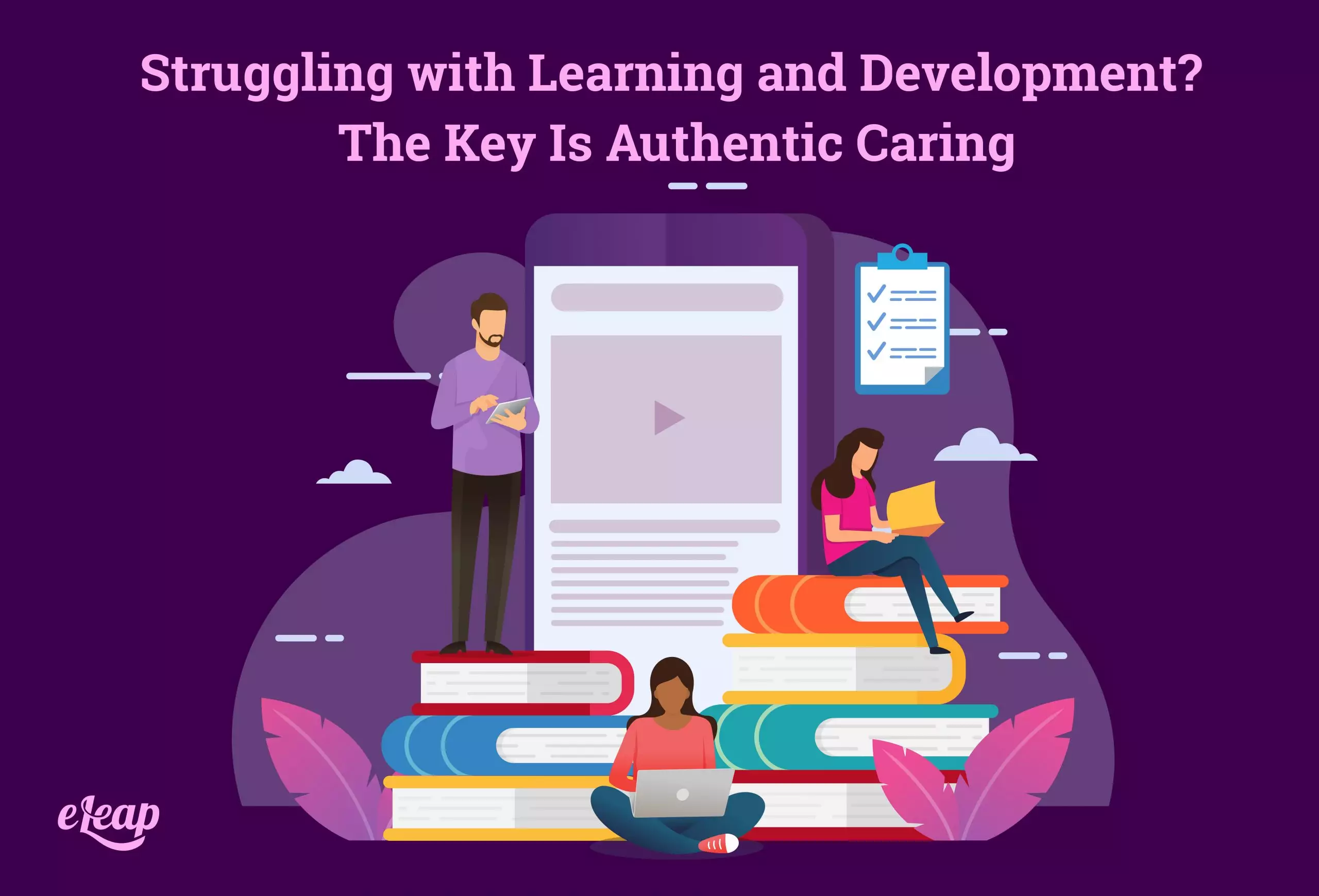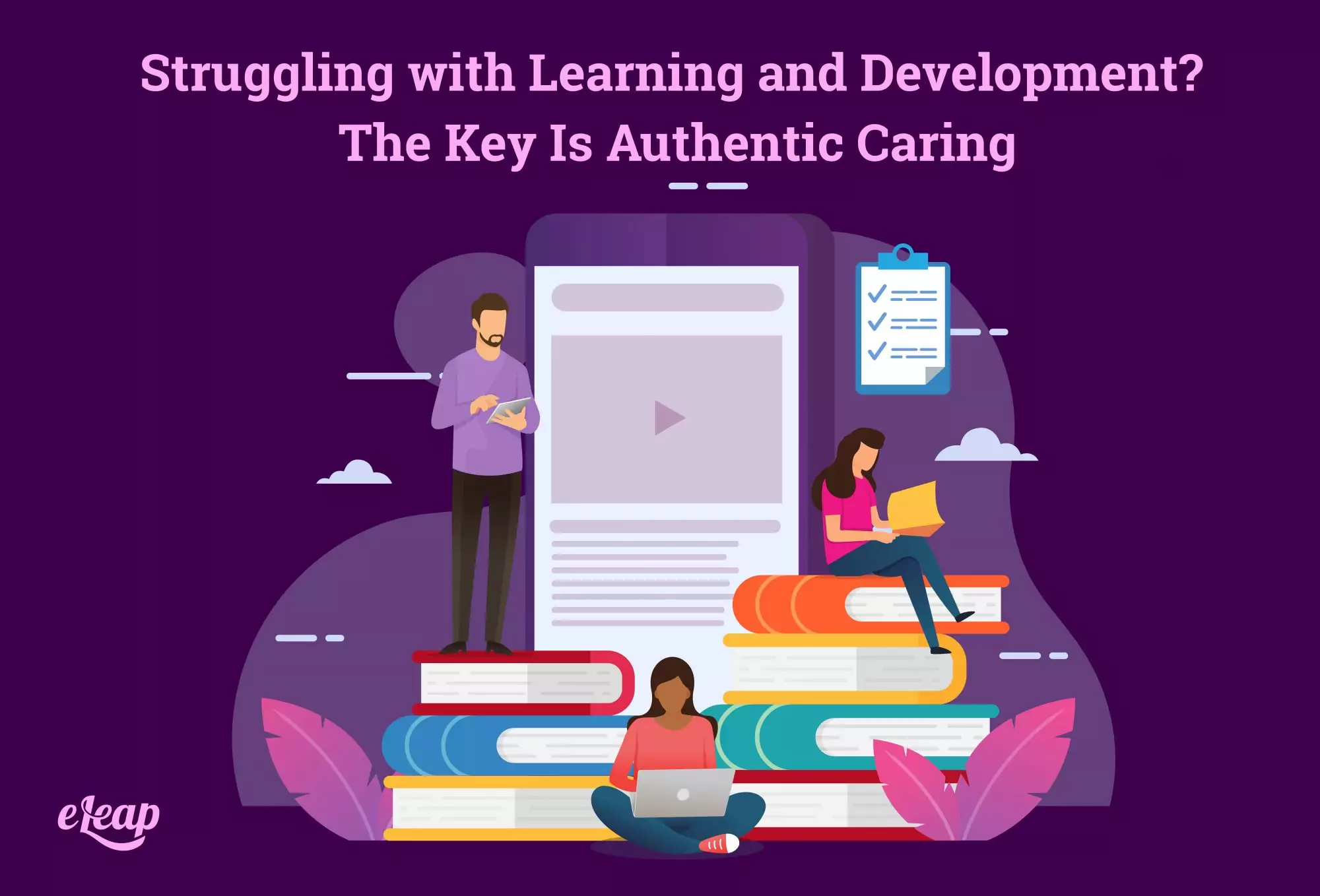Struggling with Learning and Development? The Key Is Authentic Caring

Is your company struggling with learning and development initiatives? It’s pretty common. You can provide all the resources necessary, preach the importance of continued development and growth, and even mandate some types of training. However, if your team members don’t commit to changing and showing a little compassion, it probably is not going to happen.
The underlying truth of learning and development is this: every individual is responsible for their personal and professional evolution. That’s embodied in truisms like “you can lead a horse to water, but you can’t make it drink”. Without buy-in from employees, you may see little traction in terms of ongoing development. In fact, you might experience blowback.
What’s the solution to the situation? The key here is authentic caring – compassion. It opens doors that would otherwise remain firmly locked and enables success on a scale unachievable through other means.

Compassion vs. Empathy
Above, we mentioned that compassion is the key. Authentic caring is the way forward. What does that mean, though? Many people confuse compassion with empathy. Both are vital to a thriving organization and positive company culture, but they’re not the same thing.
Empathy is the ability to put yourself into someone else’s shoes and see things from their point of view. You’re able to suffer with them.
Compassion is empathy combined with the drive to help that person free themselves from suffering and become happier and healthier. Compassion is care in action. Everything we’ll discuss below is based on the concept of putting care into motion to create positive change and help your team members become their best selves.
How You See Them Changes Them
While everyone is responsible for their own evolution, that doesn’t mean that their acceptance of the need to evolve is based on solely self-related factors. In plainer English, what we mean here is that when you change how you look at someone when you see them as being able to improve and perform higher, they are more likely to commit to that evolution themselves.
No, that doesn’t mean there’s any sort of magic spell or voodoo involved. It’s all based on human nature and how perceptions can change based on how we’re viewed and treated. It’s about how truly caring for someone else can change their perception of themselves.
Find an Underperformer
Think about someone in your organization who you would categorize as an underperformer. Chances are good you can think of a couple right off the bat. Now, imagine that person transforming – they learn new skills, adopt new habits, and evolve both personally and professionally.
It’s pretty challenging to do this. Human nature is to think of people as being unable to change. They’re static.
We picture people in our lives being the same as they were years ago. For instance, think back to the kids in your classes in school. Focus on any one of them and imagine them as adults. Chances are good you picture them behaving similarly to the way they did as children, just in an adult’s body.
The challenge here is for management to train their brains to see people’s potential, rather than pigeonholing them, and creating a static image. People are dynamic. Life is dynamic. The world is dynamic. Change is the rule, not the exception.
Look at Them as More Than Resources
As managers, it becomes difficult to resist categorizing team members by what they do and what they bring to the table. As we do that, we strip them of their humanity and turn them into little more than resources to fuel the business and help achieve desired outcomes. That mindset is incredibly damaging and could be at least part of the reasons you’re meeting resistance to L&D initiatives.
To encourage your people to be their best selves, you must see them as people. They’re more than just a skillset or a capability. They’re more than resources for the company to use. In fact, they are the company. Without the human element, you have no business.
Discard the Critical Thoughts
Many managers find that once they manage to change how they see employees and look at them as people rather than resources, they still struggle. That’s because they see things in a critical light. They look at a person and think, “I know you can do better and be so much more than this. I’m disappointed in you”.
That type of thinking colors your actions toward the person and bleeds through no matter what you do. Remember – thoughts are the ignition of action. They ignite and fuel what you do.
Even your communication with team members will be colored by how you think about them, and if your thoughts are critical, your actions and communication will also be critical. Most people get defensive when met with unnecessary critical communication. They wall themselves off and stop trying. You’re self-sabotaging here.
Instead, train your brain to think, “I accept you for you. However, I see you can do so much more and I want to help you grow into that new role.” That reframes everything! Instead of being critical, you become compassionate. Instead of castigating someone, you encourage and support them. The difference that makes in your employees and their reaction to learning and development will be incredible.
Grow Your People
With a compassionate approach to learning and development, you can bolster employee buy-in. When they do that, they will commit more and more to improving themselves personally and professionally. However, a compassionate approach doesn’t mean that underperformers get a free pass. You still have to engage in performance management. After all, compassion also means stopping actions that could be damaging or dangerous.
In the end, learning and development dovetail with performance management. It’s about creating a holistic, compassionate view where you’re able to give timely feedback and course-correct, but also encourage people to step up and grow into the amazing beings that you know they can become.